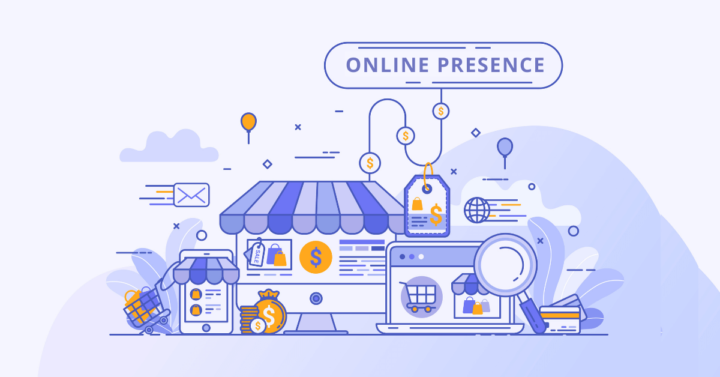
During these turbulent times, it is getting tough for businesses in all sectors to function properly.
With your business operations come into a halt, huge drop in sales, erosion of your customer base, and your workforce will be in distress mode.
This time of the hour, people will be plugged to the internet and active on social media platforms. You can turn this situation into an opportunity to build a strong brand online and make your business future-ready.
When you convert your business as a brand, it will be easier for your customers to RECOGNIZE you from your competitors. This will in turn generate more sales, more revenue and customers will prefer you as their brand of choice.
Now comes the question how to build brand awareness for your business?
I can give a you two-word answer for that question. Digital marketing!
In other words, you can build brand awareness through digital marketing.
It is way more effective rather than solely running costly ads on TV, radio, newspapers, and magazines to build brand awareness for your business.
If you are new to the world of digital marketing then you can check out this video by Neil Patel, where this concept is explained in a simple manner.
Brand awareness through digital marketing can be done in ten different ways and let’s dive into each one of them.
#1 Search Engine Optimization (SEO)
With internet now available at everyone’s fingertips, anyone can search anything on Google.
This means your target customers are also using Google to find you i.e., your business website within the search results.
You can consider Bluehost, Namecheap, Inmotion Hosting, or Dreamhost, to purchase the website domain of your choice and to get a hosting service with minimal downtime plus great customer support.
You can become a brand when your service or product shows up in search results when your prospects look for you.
According to Google, 51% of customers have discovered and purchased from a new brand they hardly knew just by searching on their mobile.
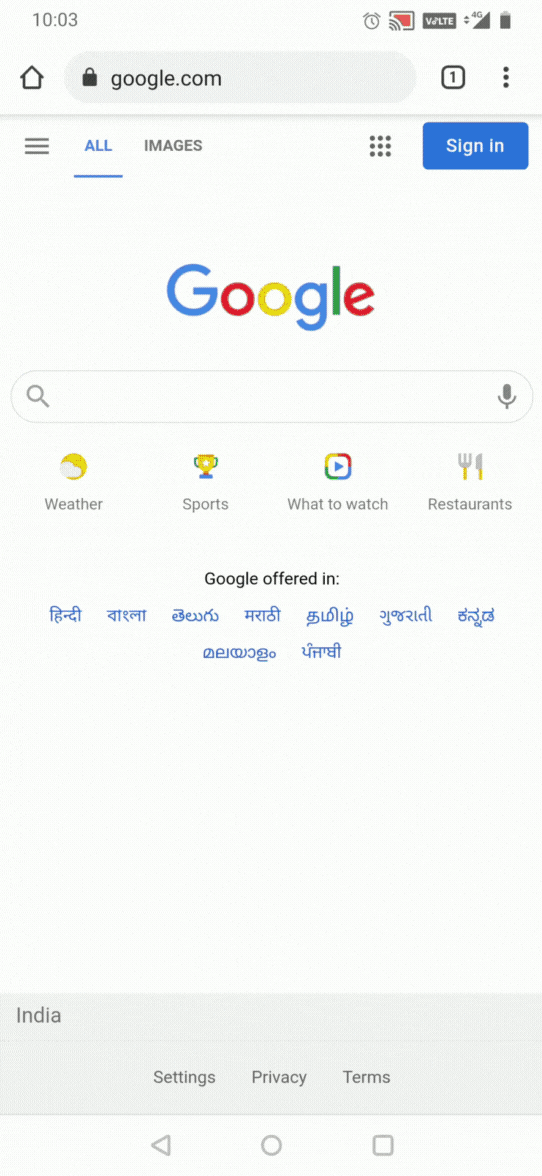
Your prospects consider high search result rankings of high quality.
Also, they conduct frequent researches online before they buy, and their purchase decisions are affected by what your prospects read on your website, whether their needs are met, and what others are saying about your product/service, or your business.
You can cater your prospect’s need and to be their ‘brand of choice’ by implementing search engine optimization (SEO).
By optimizing your business website, it will be discovered in Google’s search results with higher rankings. Here’s an awesome article on how to use SEO for building brand awareness!
You need to create a localized SEO strategy if your business (like a restaurant, coaching center, auto dealership, etc) is catered to a local audience.
#2 Content Marketing
Do you know that creating content helps in converting your business into a brand?
Having a strong content helps your customers to knowing more about your business and what you represent as a brand.
Keep in mind that your audience knowing just the name your brand doesn’t count as brand awareness. Your content needs to highlight the qualities that set your brand apart from your competitors.
Sharing information about your business makes it clear what sets you apart from others in your industry and show your customers why they should choose you over your competitors.
If you ask a digital marketing consulting expert, they will recommend you content marketing if you want to play a long-term game such as building brand awareness or building brand reputation.
For example, you can create a content marketing strategy on your business’s story – how it is started, how you succeeded, major milestones achieved, your beliefs, and your vision.
This is way better than just focusing on your product or service all the time.
You can use storytelling in your content marketing strategy that will help in connecting with your customers on a more personal level and they will start acknowledging you as a brand.
You can choose from various content formats that best suit your strategy and that include videos, blogs, webinars, downloadable ebooks, podcasts, and infographics.
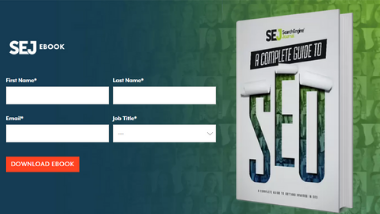
To promote your content, you can use your website (SEO), social media, paid advertising, or through influencers.
Check out this how-to guide by HubSpot which helps you in creating a content marketing strategy to reach your audience as a brand.
#3 Ecommerce
It seems keeping an online presence has become a high priority for retail businesses as it is now a key factor in driving shoppers to your brick-and-mortar store.
Even when direct customer visits to your retail store slow down you will be able to drive sales online. If customers get the best online and offline shopping experience from your store then they will start recognize you as a brand.
There are two different ways to generate sales online for your retail business.
One, you can create your own online store using an ecommerce platform like Shopify, Wix, WooCommerce, or BigCommerce. Choose your platform based on the size of your retail and budget requirements.
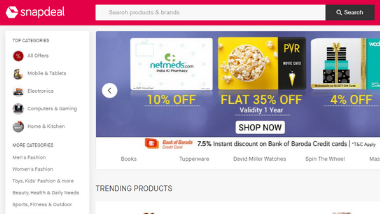
Most of the ecommerce platforms have in-built Search Engine Optimization (SEO) elements which you can utilize to rank your online store on Google.
Also, Google lets you showcase your products on their Google Shopping tab as a free listing.
Another way is through social media!
Recently, Facebook has launched Facebook Shops which is a free and customizable feature that enables you to convert your Facebook or Instagram page into an online store.
Thereby, you can leverage Facebook and Instagram to showcase your products and allow customers to make purchases directly just like a regular online shopping website.
Pinterest is another image sharing platform you can consider to get your products in front of shoppers via social media.
#4 Search Engine Marketing (SEM)
If you are expecting faster results from your SEO campaign then you need to ‘boost’ it with paid search also known as pay-per-click (PPC) advertising.
This combination of organic SEO and paid advertising is called Search Engine Marketing. SEM is another strategy you can adopt for brand awareness through digital marketing.
When it comes to Google search engine, you can use their search ads in conjunction with your SEO campaign to build brand awareness and authority.
People tend to click on those search results that are most relevant to them. Also, paid search ads are positioned on the top spot of a Google search result page.
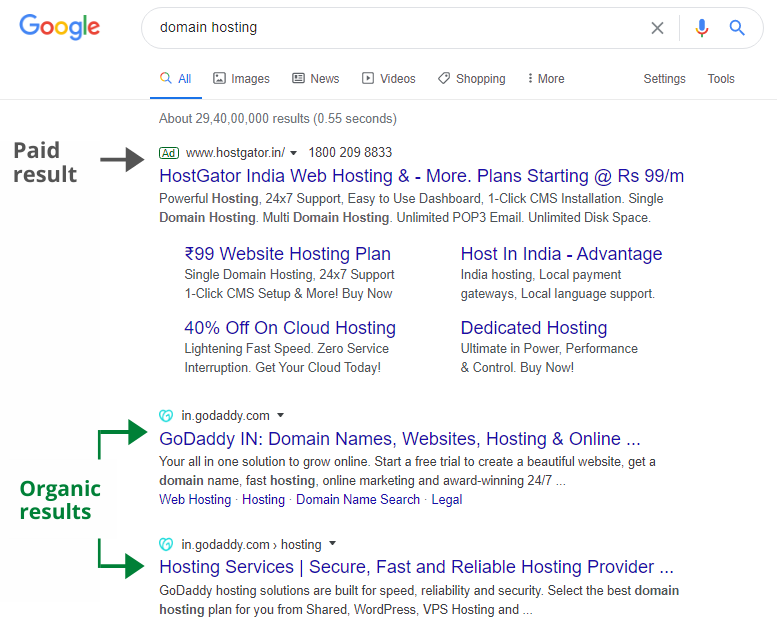
This will help businesses to dominate top side of Google search results page with paid ads and organic results that will answer people’s search queries.
Nowadays, people know the difference between organic and paid search results. Yet, people click on the ads if they find those paid search results relevant.
Consistent appearance across Google search results (both organic and paid) for search queries related to your service/product/business is the best way to establish a lasting brand impression.
For example, if your business is an interior design firm, you can target all terms related your business rather than just exact match phrases, in this case “interior design firm”.
You need to do research to determine the close variants of your business’s core search queries. Through this process, you can discover that keywords such as “interior designers near me” also attract a solid number of monthly searches.
If your ads can answer people’s search queries then your business can establish itself as a reliable brand to potential customers.
This combined effects of organic search results (SEO) and paid search ads (PPC) will generate high quality traffic to your website and people will recognize your business as a brand.
Other than Google, you can also consider Bing in your search engine marketing efforts. Check out this ebook published by Search Engine Journal which provides you all the fundamentals and essentials of PPC advertising.
#5 Social Media
Social media has become a powerful communication tool for businesses as it helps them to connect with their customers directly.
It has also become a powerful marketing channel for them to build their brand.
For example, social media helps a cloud kitchen business in interacting with their target customers as it doesn’t have a dine-in facility just like traditional restaurants . They can use Twitter which can act as a customer service tool as well as a marketing platform.
According to Sprout Social’s 2020 survey, 57% of consumers follow brands on social media to learn about new products or services.
In the same report, it is said that 89% of consumers buy products/services from the same brand they follow on social media.
So, social media channels are a one-to-many solution for getting the word out about your business and gain reputation as a brand.
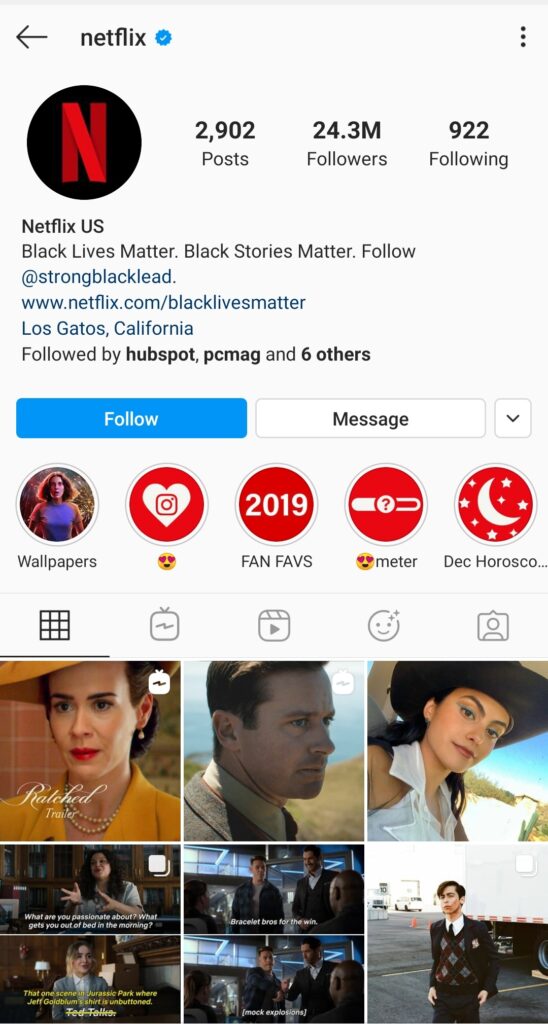
Currently, the major social media platforms with over a billion users include Facebook, Twitter, Youtube, Instagram and Linkedin (will soon reach that position!).
You don’t need to be in every social media platform. It’s better to focus on one or two channels where your target audience is active and engaging.
For example, Linkedin is a professional networking site dedicated to working professionals, freelancers, company executives, entrepreneurs, business owners, and even for college students.
Linkedin help companies mainly in the B2B space in building their corporate branding and employer branding.
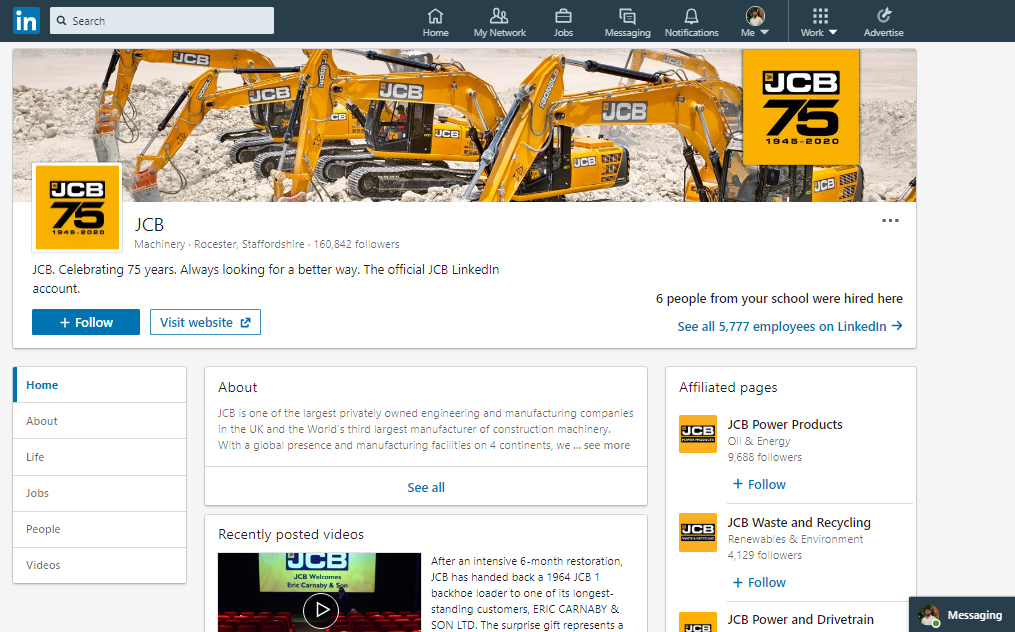
Don’t go behind the “huge number of followers” tag blindly.
Just think about it, 100 followers who buy from you is way better than 10000 followers who don’t buy your product/service.
When it comes to posting on social media, be consistent, schedule your post timings and don’t blatantly promote your product or service.
Try to post content that is informational, educational, and entertaining which attracts your audience and engage with it. You can refer the social media pages of famous brands for ideas.
Videos, images, gifs, infographics and carousel sides are the different content formats you can use to increase audience engagement.
Since major social media platforms have decreased their organic reach, you must have to be creative and use storytelling when it comes to your content strategy.
Most underrated strategy in social media branding is replying to the comments posted by your followers on your content. And, replying to chat messages from your followers.
Talking about direct messages, WhatsApp is another great messaging tool that you can use in building local business presence. Check out this article to know more.
Here are few social media marketing tips provided by Influencer Marketing Hub for each channel that you can start using to build your brand awareness.
You can also explore social media advertising if you want to increase the performance of your branding campaigns through paid ads.
Thus social media has become an integral part of digital marketing when it comes to building brand awareness.
#6 Video Marketing
Thanks to affordable mobile devices and availability of high speed internet, online video consumption is on the rise.
Compared to other types of content, video is more engaging, more memorable, and more popular.
Take the example of Old Spice’s 2010 “The Man Your Man Could Smell Like” ad campaign. Their ad campaign started with the now-famous, 30-second video with the same name posted on the Old Spice YouTube channel.
This 30-second video became a huge success (now garnered more than 55 million views!) and got the whole world talking about the brand.
It also helped in rejuvenating the decades-old, male grooming products brand and suddenly became attractive to both young and old alike in a unisex way.
You can also create a similar brand awareness campaign with a small budget and limited resources.
For that you can use your smartphone to shoot high-quality videos and customize/edit them using online video makers like Animoto, InVideo, Renderforest, or Biteable.
For content development, you can use the tips mentioned in the content marketing section.
There is another great way.
If you have an active blog on your site, you can reuse the content from each blog post to create small videos.
With over a billion active users watching 1 billion hours of video content per day, YouTube is the perfect marketing platform to upload your videos and generate buzz around your business.
Make sure that you directly upload your video on social media platforms like Facebook, Linkedin and Twitter instead of sharing your YouTube video link. (They don’t like that!)
Instagram has introduced new 15-second multi-clip video feature called Reels (similar to TikTok) on their platform. They are currently promoting it very aggressively. You can make use of it !
So, try to include video in your campaign for building brand awareness through digital marketing.
You can use online video creation tools like Canva, Renderforest, InVideo, and Biteable to create videos (landscape or vertical ones) from scratch or use from pre-built video templates.
#7 Influencer Marketing
Influencer marketing involves collaboration between a brand and an online influencer to endorse the brand’s product or service.
An online influencer can be a blogger, tech reviewer, Instagram or YouTube content creator.
These influencers have huge number of active followers and brands want to target these followers with their products/services. Here the main goal of this kind of collaboration is to build brand awareness for the product or service.
For example, here’s Zach King who is a well-known social media influencer promoting the movie Mulan. This is a paid collaboration with Disney’s streaming service Disney+.
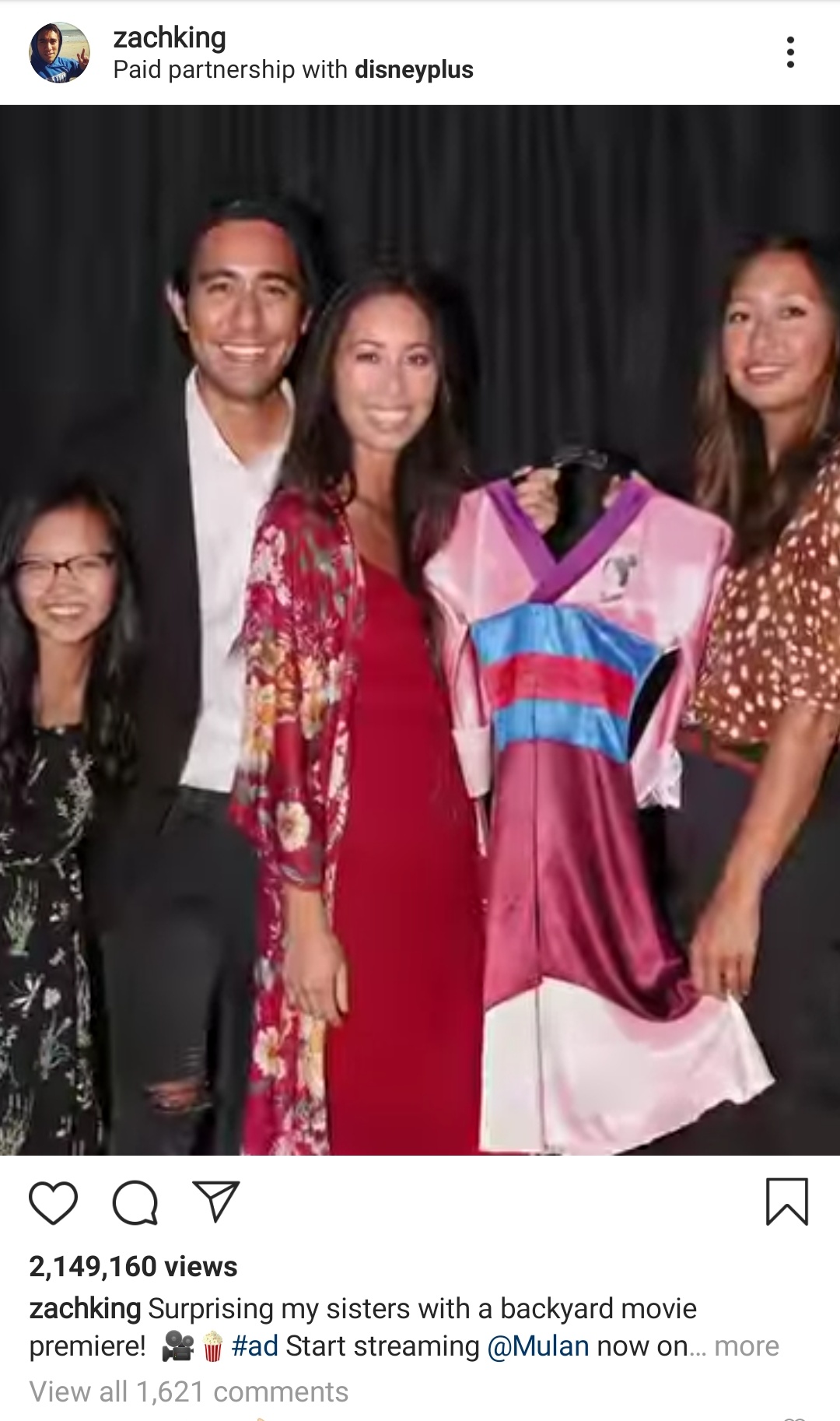
Compared to movie or TV celebrity endorsements, brand endorsement by influencers is highly target specific and affordable to execute.
Let’s consider a scenario.
If you are a restaurant owner and you want to gain brand exposure in your locality.
You can collaborate with a YouTube or Instagram influencer who creates food-related content by visiting local restaurants and eateries.
You can ask him/her to talk about your food, special offerings, home delivery and little bit about behind-the-scenes of your restaurant.
The influencer will convey all in their video/image content and shared to their food-loving followers. This will create “word of mouth” publicity for your business thanks to online platforms.
These days, even movie and TV celebrities are active on social media and they have also become online influencers with millions of followers.
Then there are micro-influencers with 5000 to 50,000 followers and nano-influencers with less than 5000 followers.
They focus on a specific area or niche (like travel, tech, cooking, etc) and generally regarded as an industry expert or specialist.
These influencers have stronger relationships with their followers compared to their bigger counterparts. That means more active engagement from these followers.
They can help you to generate worth-of-mouth that will in-turn create branded searches on Google and brand mentions on other digital platforms.
For startups and small businesses, these nano-influencers are highly reliable because of specific audience, higher conversions, brand reach, and affordable.
Influencer marketing is now becoming a booming industry and at the same time there is a rising threat of fake influencers.
Make sure you do a thorough research on the influencer you want to collaborate with, before approaching them directly.
This how you can build brand awareness for your business using influencer marketing.
#8 Email Marketing
Email is the most underrated marketing channel and the cheapest one available right now.
Due to this reason, small-medium businesses and startups can rely on this type of digital marketing channel to enhance their brand awareness.
According to HubSpot’s 2020 email marketing statistics,
- There are over 3.9 billion daily email users.
- 46% of all email opens happens on mobile.
- 35% of business professionals check emails on their mobile. (B2B branding opportunity!)
First and foremost, you need an email address that utilizes your company’s domain name ([email protected]).
Don’t use email addresses from Gmail, Ymail, Hotmail and other third-party email services when it comes to communicating with your target audience/customers.
Your audience trusts your business as a professionally-managed organization when you engage with them via email address using your domain name.
If you already have an audience email list, you can segment the list by buying behavior, age, gender, demography and other criteria.
This ensures that your audience receives content suited specifically to their needs. This is called personalization.
With personalization, you can personalize your email subject line, create call-to-actions, and make sure that your audience is aware that you do care for their needs.

With this kind of email marketing campaign, you can anticipate the needs of your audience and at the same time create a positive brand impression.
Unlike social media, through email it is easy for you to reach out to your customers and it is an effective way to deliver your message and to keep in touch with their needs.
Common email-based marketing messages include event announcements, promotional campaigns and email newsletters.
Make sure that you send only two or three emails to the same customer a week and try not to overdo it. If you do, your emails will be considered as spam and the customer will block you or unsubscribe from your email list.
#9 Referral Marketing
Referral marketing can help you in converting your satisfied customers into brand promoters!
Since they have purchased your product/service and they are happy with it, and the return-of-investment (ROI) they are getting from it, that’s a powerful selling point to others.
The main goal of any referral marketing campaign is to get enough positive worth-of-mouth impression for your business.
This is another, cost-effective way of building brand awareness for your local business, small business, or startup.
You can conduct referral marketing campaigns using digital platforms.
You can create a referral program on your website and invite your loyal customers to sign-up for the program.
You can provide them with a referral code or customized link that they can share to their friends who will in turn use it to purchase from your business.
You can reward your loyal customers who bring new sales via your referral campaign.
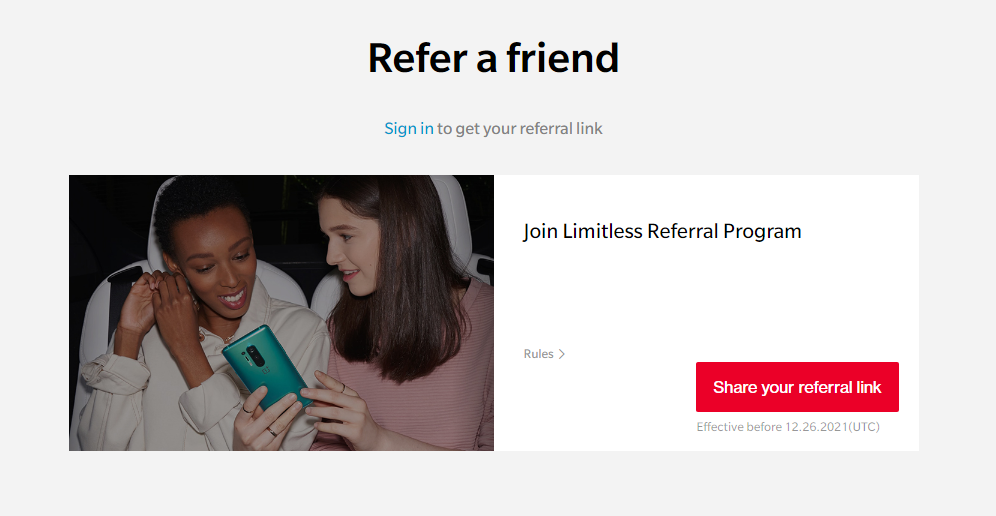
Another way is by recruiting every loyal customer as a ‘micro-influencer’.
You can request your loyal customers to showcase their buying experience from your business via their social media accounts.
As mentioned earlier, you provide them with referral code or customized link that can be shared along with their social media posts.
You can choose the best salespeople from your loyal customer base.
They can “introduce” your brand to their family and friends without sounding too promotional or artificial. And their friends are more likely to go with a recommendation from a friend than some movie celebrity on TV.
#10 Brand Monitoring
Do you want to know who talks about your business online?
Whether they are saying well about your business or complaining about your product/service, how will you know?
Brand monitoring can help you with that.
As the name implies, it is the process of monitoring various online channels to find mentions of your business.
Here are the major online channels you can track for brand mentions – blogs, review websites, social media platforms, Q&A forums, online news and magazine publications.
Whether you’re a small business or a global enterprise, more and more people are finding their online voices. With smartphones, they could be talking about your brand even while they are in your office/shop.
There are many online tools available and some of them include Mention, Buzzsumo, BrandMentions and Google Alerts.
You can use these tools to track product mentions, brand mentions, and mentions of well-known employees/people working for your business.
Brand monitoring provides a considerable boost to your SEO campaign.
You can use the same brand monitoring tools to check on your competitors.
This digital marketing tactic can enhances your brand awareness for your business or your product/service.
Conclusion
You can plan your campaign for brand awareness through digital marketing using any of the above-mentioned methods.
Ultimately, the success of any marketing or branding campaign depends on the quality and customer satisfaction of the product or service you are offering.
Let me know what you think about utilizing digital marketing in your next brand awareness campaign.

Nice One!
Thank you, Rahul. Glad you liked my (first) post. 🙂
Thank you, Vishnu. 🙂
Appreciate this post. Will try it out.
Thank you, Klara.
I do not even know how I ended up here, but I thought this post was good.
I do not know who you are but definitely you are going to a famous blogger if you are not already ;
) Cheers!